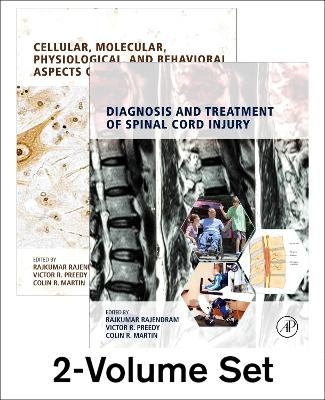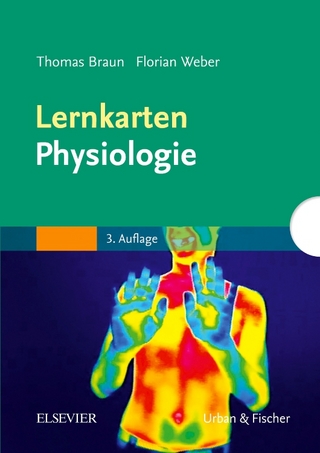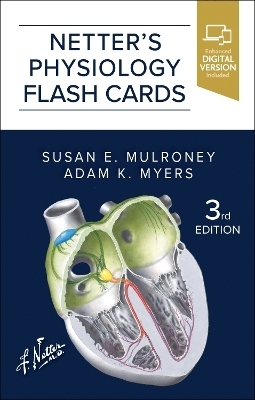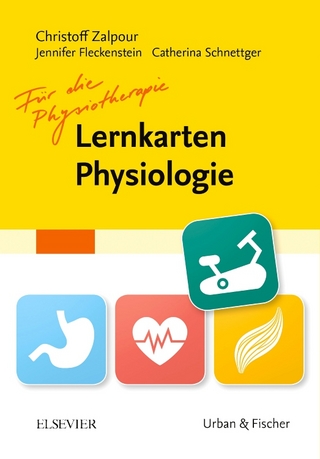
The Neuroscience of Spinal Cord Injury
Academic Press Inc
978-0-323-99198-8 (ISBN)
Spinal injury affects about 10 million people annually worldwide, impacting on the family unit and causing lifelong disabilities, with varied symptoms including paresthesia, spasticity, loss of motor control, and often severe pain. Cellular, Molecular, Physiological, and Behavioral Aspects of Spinal Cord Injury will enhance readers’ understanding of the biological and psychological effects of spinal cord injury. Featuring chapters on gene expression, metabolic effects, and behavior, this volume discusses in detail the impact of spinal cord injury to better understand the underlying pathways and processes. The book has applicability for neuroscientists, neurologists, clinicians, and anyone working to better understand these injuries.
Dr Rajkumar Rajendram is a clinician scientist with a focus on internal medicine, anaesthesia, intensive care and peri-operative medicine. He graduated with distinctions from Guy’s, King’s and St. Thomas Medical School, King’s College London in 2001. As an undergraduate he was awarded several prizes, merits and distinctions in pre-clinical and clinical subjects. Dr Rajendram began his post-graduate medical training in general medicine and intensive care in Oxford. He attained membership of the Royal College of Physicians (MRCP) in 2004 and completed specialist training in acute and general medicine in Oxford in 2010. Dr Rajendram subsequently practiced as a Consultant in Acute General Medicine at the John Radcliffe Hospital, Oxford. Dr Rajendram also trained in anaesthesia and intensive care in London and was awarded a fellowship of the Royal College of Anaesthetists (FRCA) in 2009. He completed advanced training in regional anaesthesia and intensive care. He was awarded a fellowship of the Faculty of Intensive Care Medicine (FFICM) in 2013 and obtained the European diploma of intensive care medicine (EDIC) in 2014. He then moved to the Royal Free London Hospitals as a Consultant in Intensive Care, Anaesthesia and Peri-operative Medicine. He has been a fellow of the Royal College of Physicians of Edinburgh (FRCP Edin) and the Royal College of Physicians of London (FRCP Lond) since 2017 and 2019 respectively. He is currently a Consultant in Internal Medicine at King Abdulaziz Medical City, National Guard Heath Affairs, Riyadh, Saudi Arabia. Dr Rajendram’s focus on improving outcomes from Coronavirus Disease 2019 (COVID-19) has involved research on point of care ultrasound and phenotypes of COVID-19. Dr Rajendram also recognises that nutritional support is a fundamental aspect of medical care. This is particularly important for patients with COVID-19. As a clinician scientist he has therefore devoted significant time and effort into nutritional science research and education. He is an affiliated member of the Nutritional Sciences Research Division of King’s College London and has published over 400 textbook chapters, review articles, peer-reviewed papers and abstracts. Victor R. Preedy BSc, PhD, DSc, FRSB, FRSPH, FRSC, FRCPath graduated with an Honours Degree in Biology and Physiology with Pharmacology. After gaining his University of London PhD, he received his Membership of the Royal College of Pathologists. He was later awarded his second doctorate (DSc), for his contribution to protein metabolism in health and disease. He is Professor of Clinical Biochemistry (Hon) at King’s College Hospital and Emeritus Professor of Nutritional Biochemistry at King’s College London. He has Honorary Professorships at the University of Hull, and the University of Suffolk. Professor Preedy was the Founding Director and then long-term Director of the Genomics Centre at King’s College London from 2006 to 2020. Professor Preedy has been awarded fellowships of the Royal Society of Biology, the Royal College of Pathologists, the Royal Society for the Promotion of Health, the Royal Institute of Public Health, the Royal Society for Public Health, the Royal Society of Chemistry and the Royal Society of Medicine. He carried out research when attached to the National Heart Hospital (part of Imperial College London), The School of Pharmacy (now part of University College London) and the MRC Centre at Northwick Park Hospital. He has collaborated with international research groups in Finland, Japan, Australia, USA, and Germany. To his credit, Professor Preedy has published over 750 articles, which includes peer-reviewed manuscripts based on original research, abstracts and symposium presentations, reviews and edited books. Colin R. Martin RN, BSc, MSc, PhD, MBA, YCAP, FHEA, C.Psychol, AFBPsS, C.Sci is Professor of Clinical Psychobiology and Applied Psychoneuroimmunology and Clinical Director of the Institute of Health and Wellbeing at the University of Suffolk, UK. He is a Chartered Health Psychologist and a Chartered Scientist. He also trained in analytical biochemistry, this aspect reflecting the psychobiological focus of much of his research within mental health. He has published or has in press well over 300 research papers and book chapters. He is a keen book author and editor having written and/or edited more than 50 books. These outputs include the prophetic insight into the treatment of neurological disease, Handbook of Behavior, Food and Nutrition (2011), Nanomedicine and the Nervous System (2012), Oxidative Stress and Dietary Antioxidants in Neurological Disease (2020), Zika Virus Impact, Diagnosis, Control and Models (2021), Factors Affecting Neurodevelopment: Genetics, Neurology, Behavior and Diet (2021), Diagnosis and Treatment of Spinal Cord Injury (2022), The Neurobiology, Physiology, and Psychology of Pain (2022) and The Handbook of Lifespan Cognitive Behavioral Therapy: Childhood, Adolescence, Pregnancy, Adulthood, and Aging (2023). Professor Martin is particularly interested in all aspects of the relationship between underlying physiological substrates and behavior, particularly in how these relationships manifest in both acute and chronic psychiatric disorder. He has published original research germane to significant mental health disorders including the areas of schizophrenia, anxiety, depression, self-esteem, alcohol and drug dependency, high secure forensic mental health and personality disorder. He has a keen interest in the impact of postviral illness and is actively involved in clinical research post-Covid pandemic and in particular, the impact of Long Covid on psychological, neurological, physiological and social functioning. He is involved in collaborative International research with many European and Non-European countries.
Diagnosis and Treatment of Spinal Cord Injury:I. Setting The Scene: Introductory Chapters1. Outcomes of traumatic spinal cord injury in low-resource setting2. Spine injuries associated with spinal cord injury3. Body, action and space representations in people affected by spinal cord injuries4. Methods for treating pain and painful syndromes in spinal cord injury: medications, therapies, interventions, and neuromodulation
II. Clinical Features Of Spinal Injury 5. Factors Contributing To Pressure Injuries In Traumatic Spinal Cord Injury6. Venous thromboembolismin spinal cord injury 7. Osteoporosis-related fractures: what they are and how they occur following spinal cord injury8. Brain atrophy and white matter in compression injury to the spinal cord9. Spasticity in spinal cord injury10. Falls among individuals living with spinal cord injury11. Infections and spinal cord injury: Covid 19 and beyond12. Treating sleep problems in spinal cord injury
III. Diagnosis and Evaluation13. Biomarkers in spinal cord injury14. Quality of life tools for spinal cord injured people15. S100 in spinal cord injury16. Balance measures and assessments in spinal cord injury: a narrative
IV. Treatments: Experimental and Clinical17. Surgical management of acute spinal cord injury in emergency departments18. Spinal cord epidural stimulation for autonomic nervous system control 19. Treating spinal cord injury with implanted spinal cord stimulators20. Bowel dysfunction in spinal cord injury 21. Management of lower urinary tract dysfunction 22. Bed and mattress for preventing pressure injuries after spinal cord injury23. Nerve and tendon transfers in tetraplegia: a new narrative 24. Gemini-supported spinal cord transplantation for the treatment of chronic spinal paralysis25. Chondroitinase ABC I as a novel candidate for reducing damage in spinal cord injury26. Phenol neurolysis for the management of spasticity in people with spinal cord injury27. Anti-repulsive guidance molecule-a antibody (RGMa) treatment in spinal cord injury28. Mitochondrial biogenesis for the treatment of spinal cord injury29. Exploring the exogenous and endogenous effects of melatonin on spinal cord injury30. High-intensity interval training in spinal cord injury31. Stem cells and chronic spinal cord injury: overview32. Gene therapy in spinal cord injury 33. Curcumin usage inflammation and spinal cord injury34. Use of (-)-epigallocatechin-3-gallate on spinal cord injury 35. Vitamin D supplementation for active individuals with spinal cord injury 36. Corticospinal tract regeneration after spinal cord injury: implications for treatment and recovery37. Trophic factors in patients with spinal cord injury
V. Rehabilitation in Spinal Injury38. Spinal cord injury: Multiple Family Group (MFG) education and support39. Spinal cord injury rehabilitation: linking service delivery and community integration40. Rehabilitation in spinal cord injury: Exercise and testing for cardiorespiratory endurance and musculoskeletal fitness41. Community based activity-based therapy for spinal cord injuries rehabilitation42. Rehabilitation and the Self-Management App: spinal cord injury43. Biomaterials and spinal cord injury and rehabilitation: a new narrative 44. Support in spinal cord injury: a focus on robotics
VI. Resources45. Research and Resources
Cellular, Molecular, Physiological, and Behavioral Aspects of Spinal Cord Injury:I. Setting The Scene and Introductory Chapters1. Causes of spinal injury: motor vehicle accidents and beyond 2. MRI findings in spinal cord injury during acute and chronic phases3. Exercise programs in spinal cord injury4. Use of anodal transcranial direct current stimulation: features, facets and applications to incomplete spinal cord injury5. Neuromodulation and restoration of motor responses after severe spinal cord injury 6. Rehabilitation and wheelchair users after spinal cord injury: an overview
II. Cellular and Molecular Aspects of Spinal Injury7. Gene expression, bone loss and spinal cord injury8. Sperm DNA fragmentation and its relevance to men with spinal cord injury9. Cytokines and spinal cord injury10. Interleukin-10, vascular pathology in traumatic cervical Spinal cord injury11. Protein Degradome in Spinal Cord Injury12. Proteomics of Pressure Ulcers in Spinal cord injury13. Innate immune responses of glia and inflammatory cells in spinal cord injury14. The role of oxidative stress in spinal cord injury animal models: a focus on nuclear factor erythroid-2 related factor 215. Novel agent ONO-2506 suppresses astrocytic activation and attenuates post-spinal cord injury pain16. Histology, neural tissue loss and compression-induced spinal cord injury17. Remodeling mitochondrial transport and cellular energetics in axonal regeneration and spinal cord injury18. Neurotrophins and their Role in Axonal Outgrowth Following Spinal Cord Injury19. The neuroscience of transient receptor potential vanilloid type 4 (TRPV4) and spinal cord injury20. Autoantibodies in spinal cord injury21. Calpain role in the pathophysiology of spasticity after spinal cord injury22. Targeting mTOR Signaling to Promote Autophagy for Functional Recovery after Spinal Cord Injury23. Tertiary damage: Hippocampal and brain changes after spinal cord injury
III. Physiological and Metabolic Effects24. Hormonal events and spinal cord injury: a focus on vasopressin and natriuretic peptide25. Linking sensorimotor plasticity, the motor cortex and spinal cord injury26. Bone mass and spinal cord injury: risk of fracture27. Functional and morphological re-organization of the brain following spinal cord injury : Insights from MRI28. Cardiometabolic changes and upper extremity exercise as an augmentative strategy in spinal cord injury29. Electrophysiological outcome measures in spinal cord injury: a new narrative 30. Features and Physiology of Spinal Stretch Reflex Pathways in People with Chronic Spinal Cord Injury31. Metabolic syndrome iin spinal cord injury: impact on health32. Body composition and spinal cord injury33. Energy requirements and spinal cord injury34. Virtual walking and spinal cord injury neuropathic pain35. Cervical spinal cord injury and thermoregulatory processes: a new narrative36. Spinal cord injury and the gut microbiota
IV. Behavioural and Psychological Effects37. Risk factors and predictors of depression after spinal cord injury: emphasis on the inflammatory process38. Spirituality, hope, and resilience in the recovery and adaptation process following spinal cord injury39. Wellness intervention for spinal cord injuries40. Sexual satisfaction and spinal cord injury41. Depressive symptoms in rehabilitation, spinal cord injury42. Self-Harm behaviors in Patients with Spinal Cord Injuries: From Nonadherence to Suicide
| Erscheint lt. Verlag | 26.8.2022 |
|---|---|
| Verlagsort | Oxford |
| Sprache | englisch |
| Maße | 216 x 276 mm |
| Gewicht | 3560 g |
| Themenwelt | Studium ► 1. Studienabschnitt (Vorklinik) ► Physiologie |
| Naturwissenschaften ► Biologie ► Humanbiologie | |
| Naturwissenschaften ► Biologie ► Zoologie | |
| ISBN-10 | 0-323-99198-X / 032399198X |
| ISBN-13 | 978-0-323-99198-8 / 9780323991988 |
| Zustand | Neuware |
| Haben Sie eine Frage zum Produkt? |
aus dem Bereich


